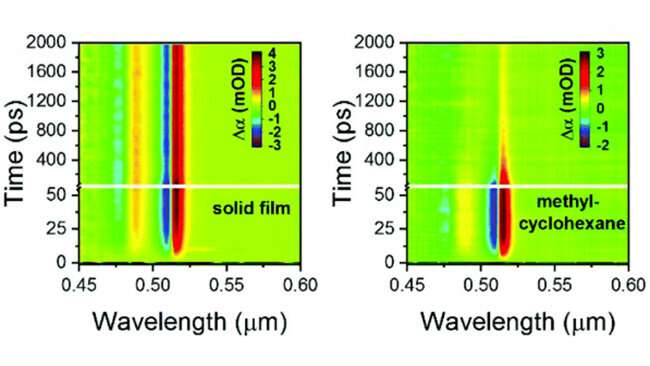Thermal management of hybrid nanoparticles

In a recent study published in Nanoscale, researchers show increases in cooling time for poorer hydrocarbon solvents compared to better solvents, indicate penetration of solvent into the ligand layer facilitates improved heat transfer to the matrix.
Heat transfer across hybrid organic-inorganic interfaces was measured by infrared pump, electronic probe spectroscopy (IPEP) which does not use electronic excitation, thereby removing any measurement artifacts.
Matching vibrational and molecular structure of ligands with surrounding solvents allows for quicker cooling of colloidal nanocrystals, which has implications for heat management in areas such as thermoelectrics.
Details
- Femtosecond infrared pulses heat up organic ligands which transfer heat to attached inorganic nanoparticles, changing the bandgap on a 10 picosecond time-scale, followed by loss of heat to the surrounding solvent over hundreds of picoseconds.
- IPEP measurements were performed at CNM using ultrafast transient absorption spectroscopy.
More information: Benjamin T. Diroll et al. Heating and cooling of ligand-coated colloidal nanocrystals in solid films and solvent matrices, Nanoscale (2019).
Journal information: Nanoscale
Provided by Argonne National Laboratory




















